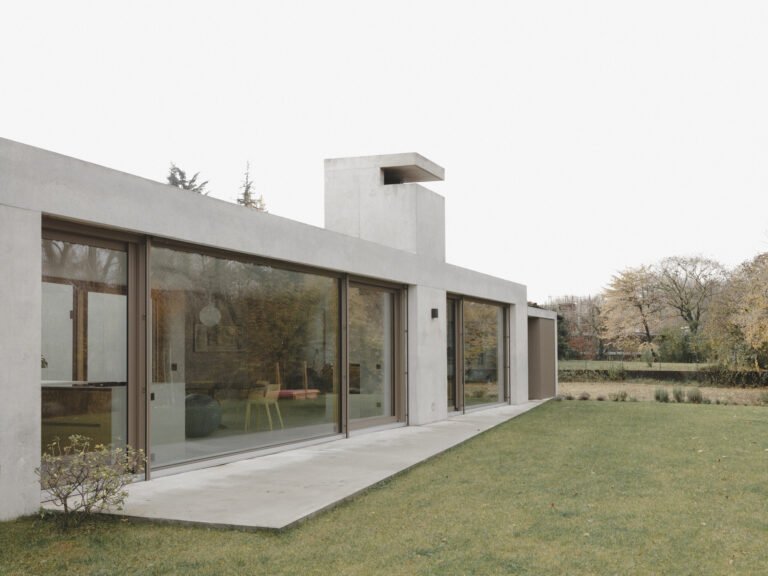Depot Boijmans van Beuningen // MVRDV
Text description provided by the architects.
Depot Boijmans Van Beuningen, the world’s first fully accessible art depot, is located at Museumpark in the centre of Rotterdam. The assignment was to offer a glimpse behind the scenes of the museum world and make the whole art collection accessible to the public. The reflective round volume responds to its surroundings.
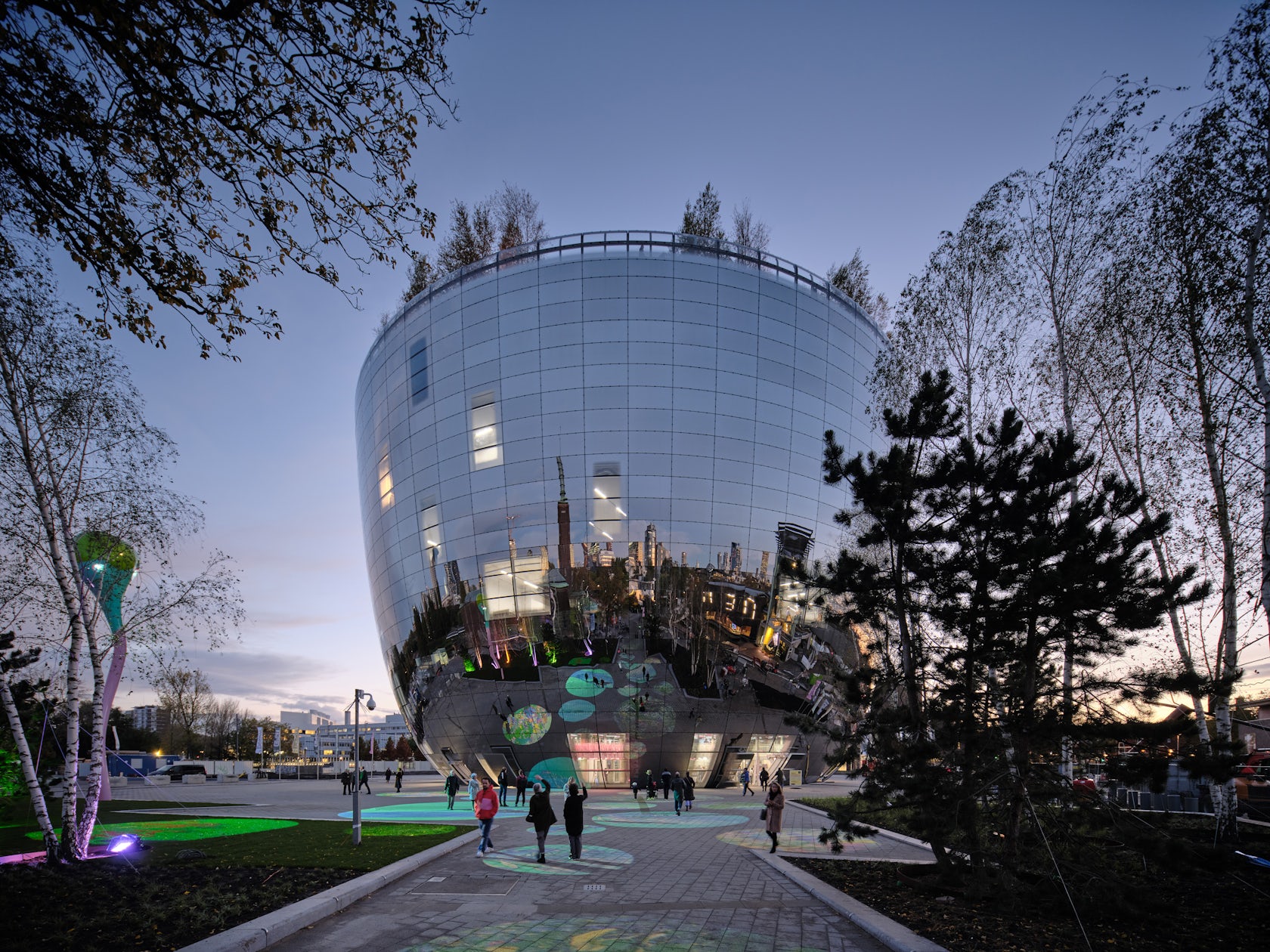
© MVRDV
The Depot features exhibition halls, a rooftop garden, and a restaurant, in addition to an enormous amount of storage space for art and design.Currently many international museums can only showcase six to seven per cent of their collections in exhibitions. The remaining 94 percent is hidden in storage. The Depot Boijmans Van Beuningen breaks with this tradition of concealment: the design makes visible all these previously invisible artefacts in a unique and iconic reflective building, specially designed by MVRDV to meet the requirements of this unprecedented typology.
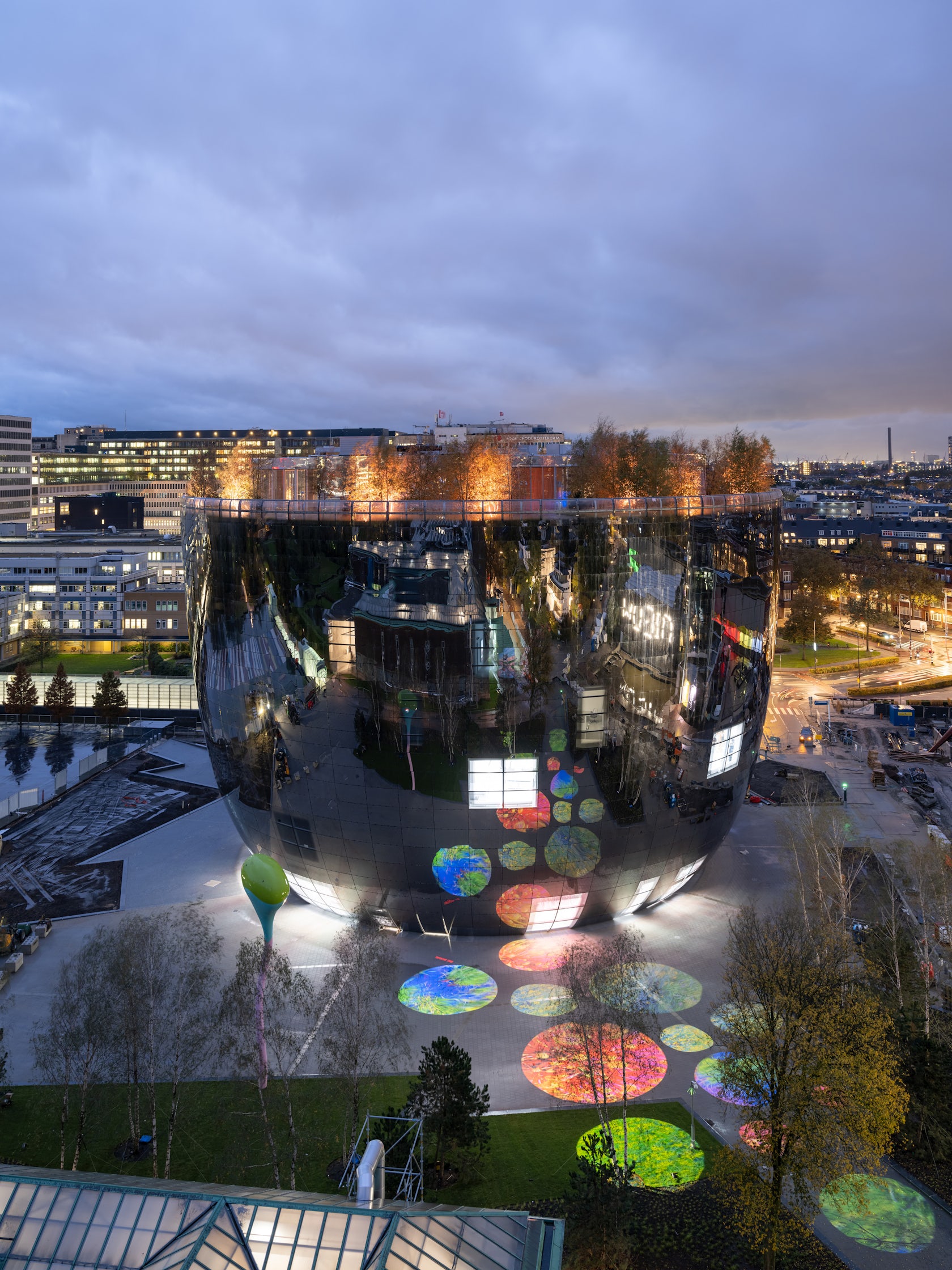
© MVRDV
Once completed, visitors of the Depot can immerse themselves in the world behind the scenes of a museum and experience what maintaining and caring for an invaluable art collection actually entails, independently or with a guide. They can also observe conservation and restoration processes, packaging, and transportation of works of art.
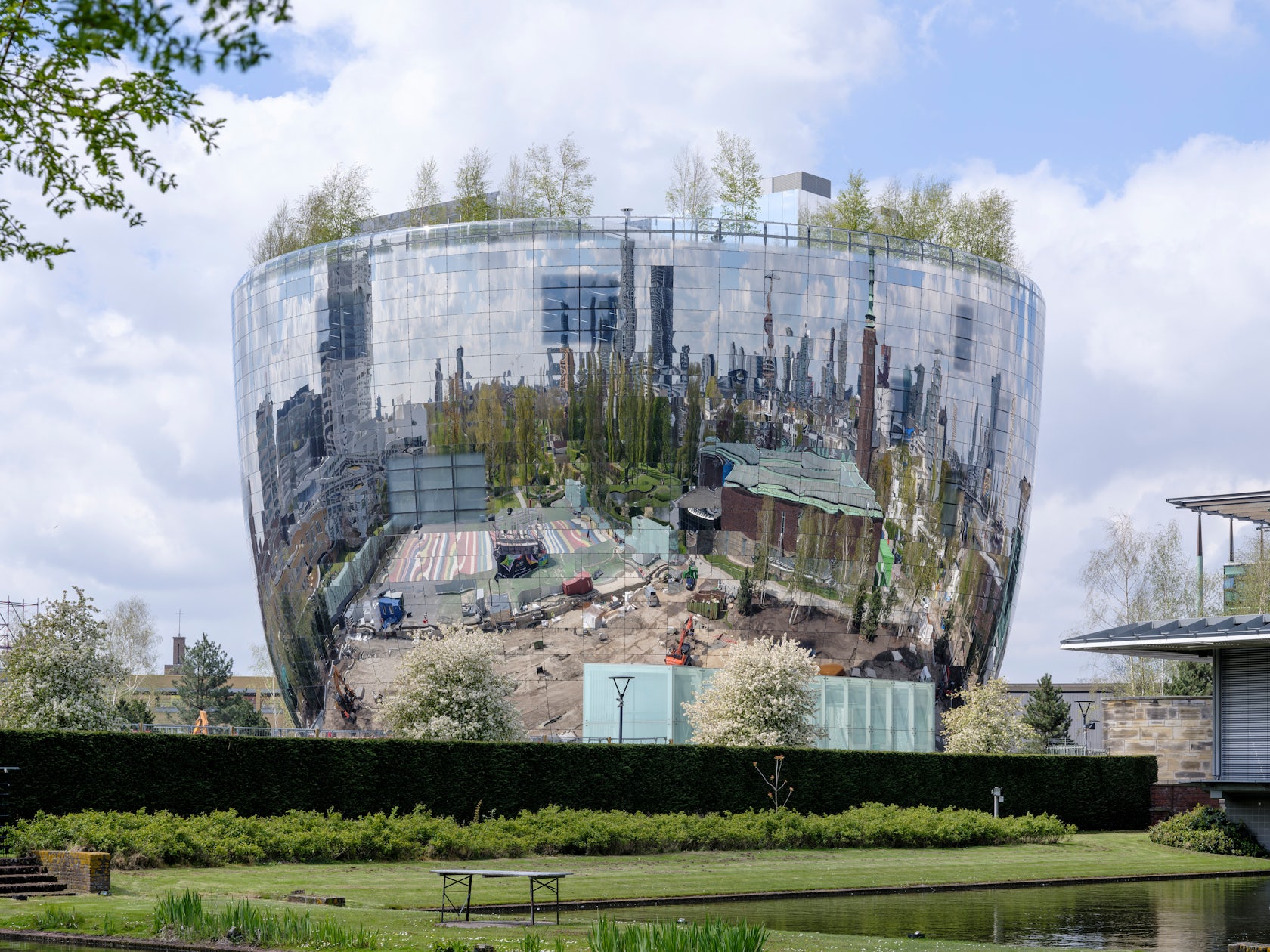
© MVRDV
Surrounded by art, visitors are led upwards through the atrium via five large zig-zagging stairways that are reminiscent of the etchings from Giovanni Piranesi.The form of the 39,5-metre-high Depot is ovoid, a building ‘in the round’. Its bowl-like shape means that the ground-level footprint is small – maintaining views into and routes through the Museumpark – while the roof is as expansive as possible.

© MVRDV
The crisscrossing staircases that lead visitors to exhibition rooms and curators’ studios also lead up to the rooftop, and the atrium is filled with 13 glass display vitrines that show a “lightly curated”, constantly evolving selection of the depot’s many treasures.
MVRDV’s design is utterly democratic, since 99 percent of the building can be visited by the public, and the collection, which contains 151,000 artefacts, will be fully disclosed.
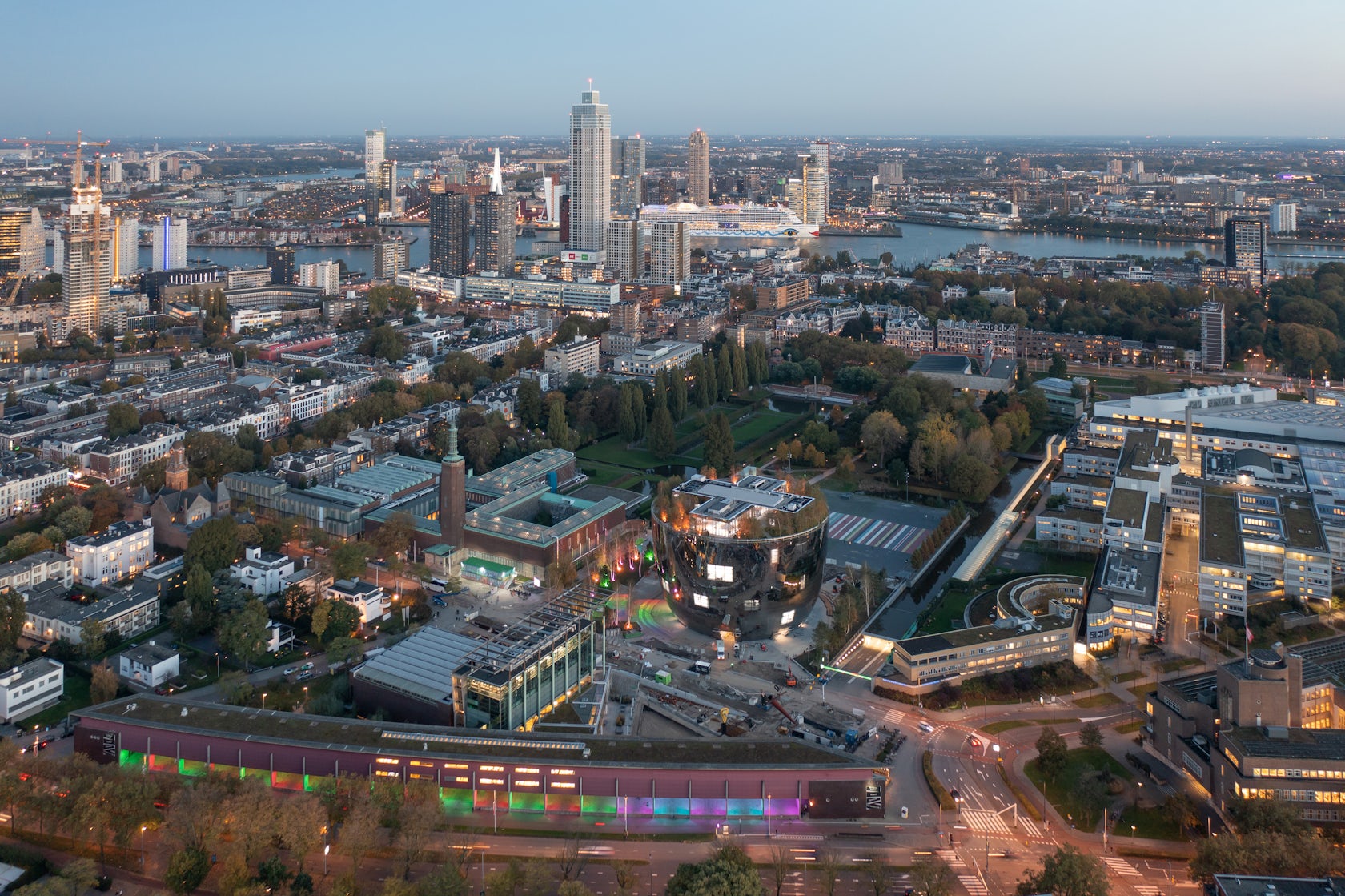
© MVRDV
As in a closed depot, the works of art are stored as efficiently as possible. Artefacts stand wrapped, hanging from a rack, displayed in a cabinet or exhibited in one of the 13 gigantic display cases suspended in the atrium. Prints, drawings and photographs will be stored in enclosed spaces, but visitors can submit requests to view works from these collections.
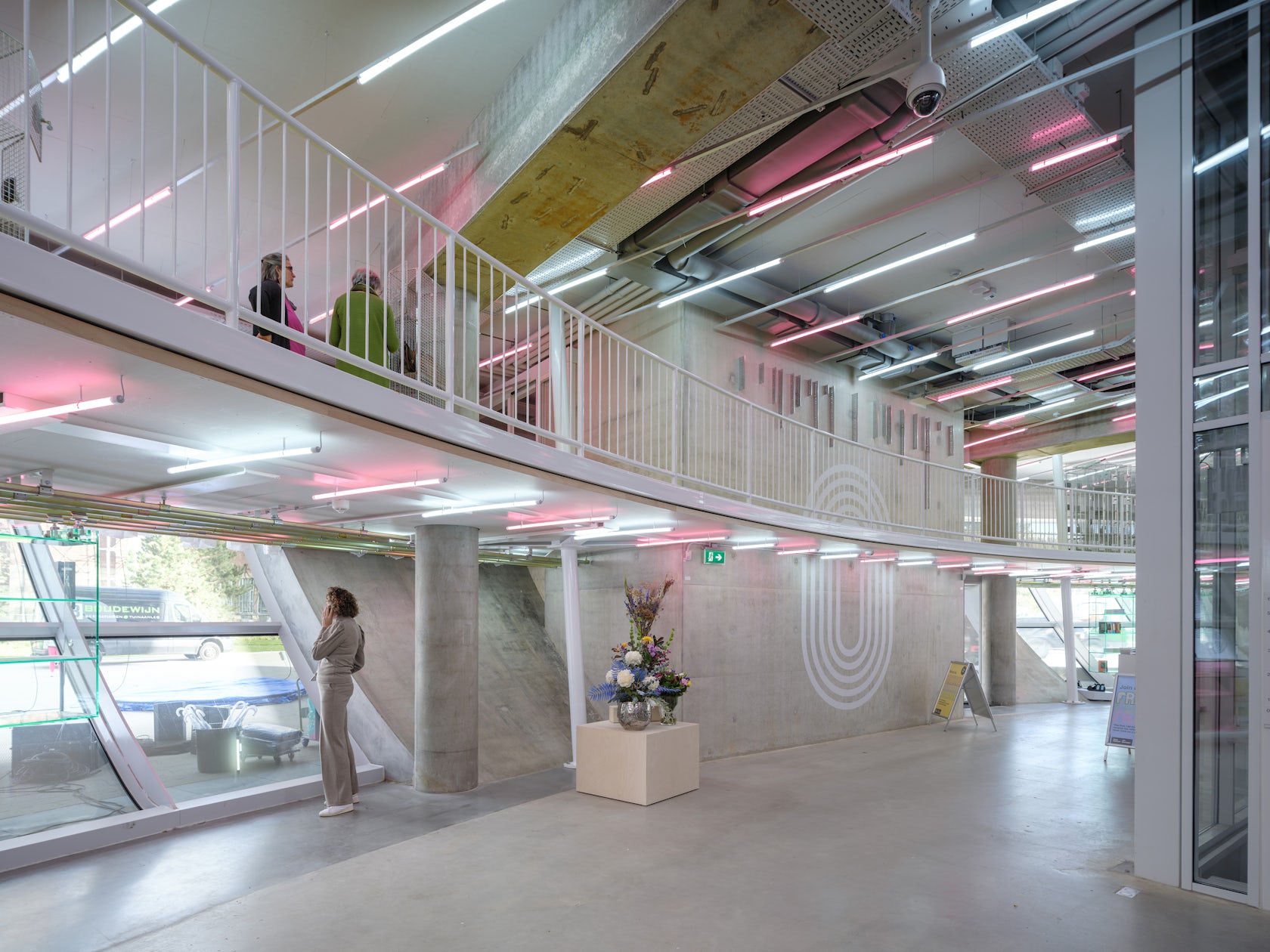
© MVRDV
The film and video collection can be viewed in special projection rooms.
The occupied park space is replaced with even more open public space in the form of a rooftop forest populated by 75 multi-stemmed birch trees standing several metres tall, alongside fir trees and grasses. The birches were bred in a special tree nursery for three years before they were planted on the rooftop terrace in spring 2020.
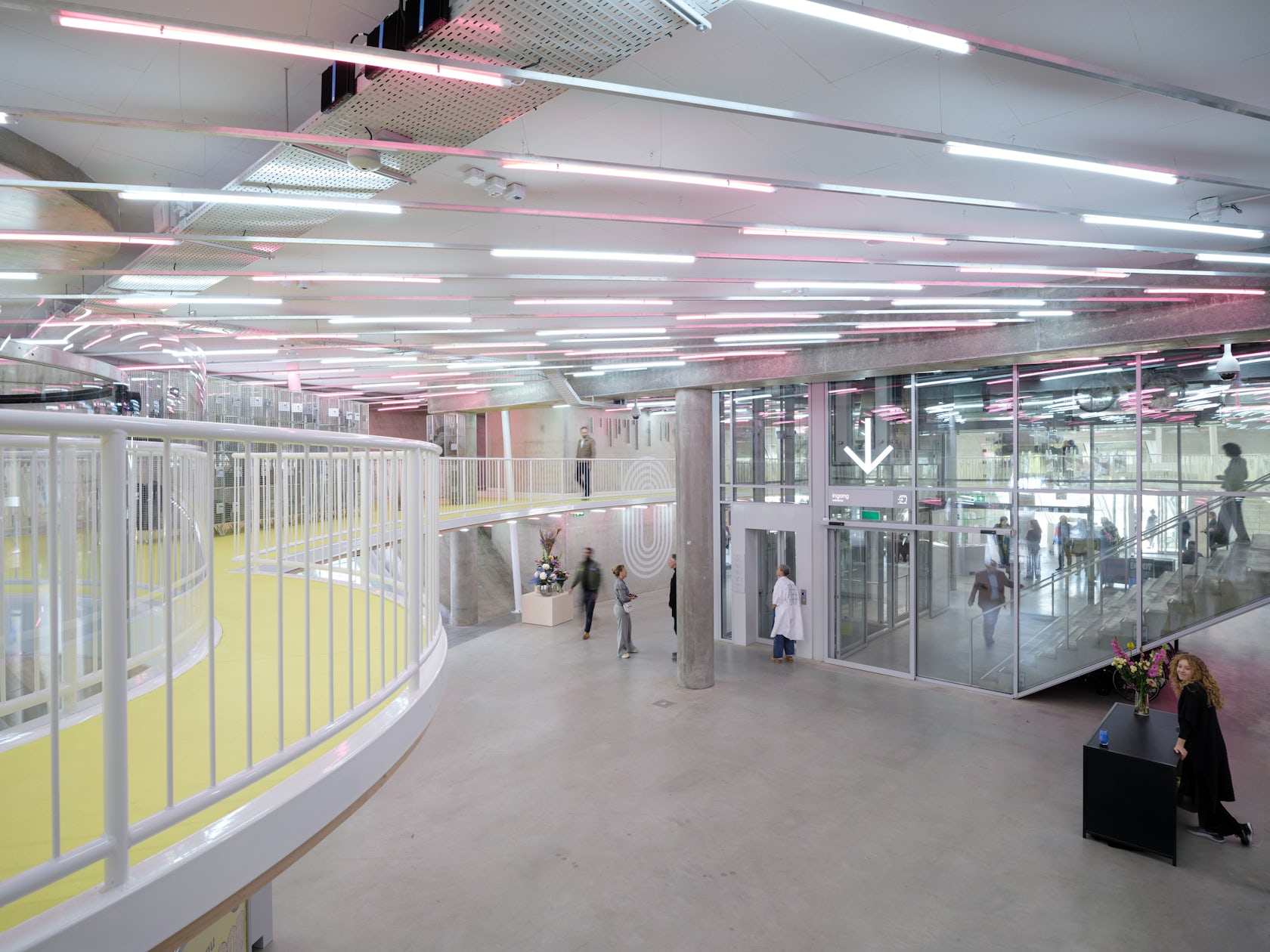
© MVRDV
The rooftop is situated on the sixth floor at a height of about 35 metres and is also accessible via an express lift. It offers visitors breathtaking vistas across the city of Rotterdam.One of the building’s most striking features is the reflective façade, which is comprised of 6,609 square metres of glass subdivided into 1,664 mirrored panels.

© MVRDV
These panels were adopted by many inhabitants and cultural institutions of Rotterdam for 1,000 euros each as a gesture of support for the Depot. The mirroring panels ensure the integration of the design with its surroundings, by reflecting and thus honouring the activity and the nature of the Museumpark, designed by landscape architect Yves Brunier with OMA in the nineties.
In the Depot, artefacts are stored on the basis of climatic requirements, rather than artistic movement or era.
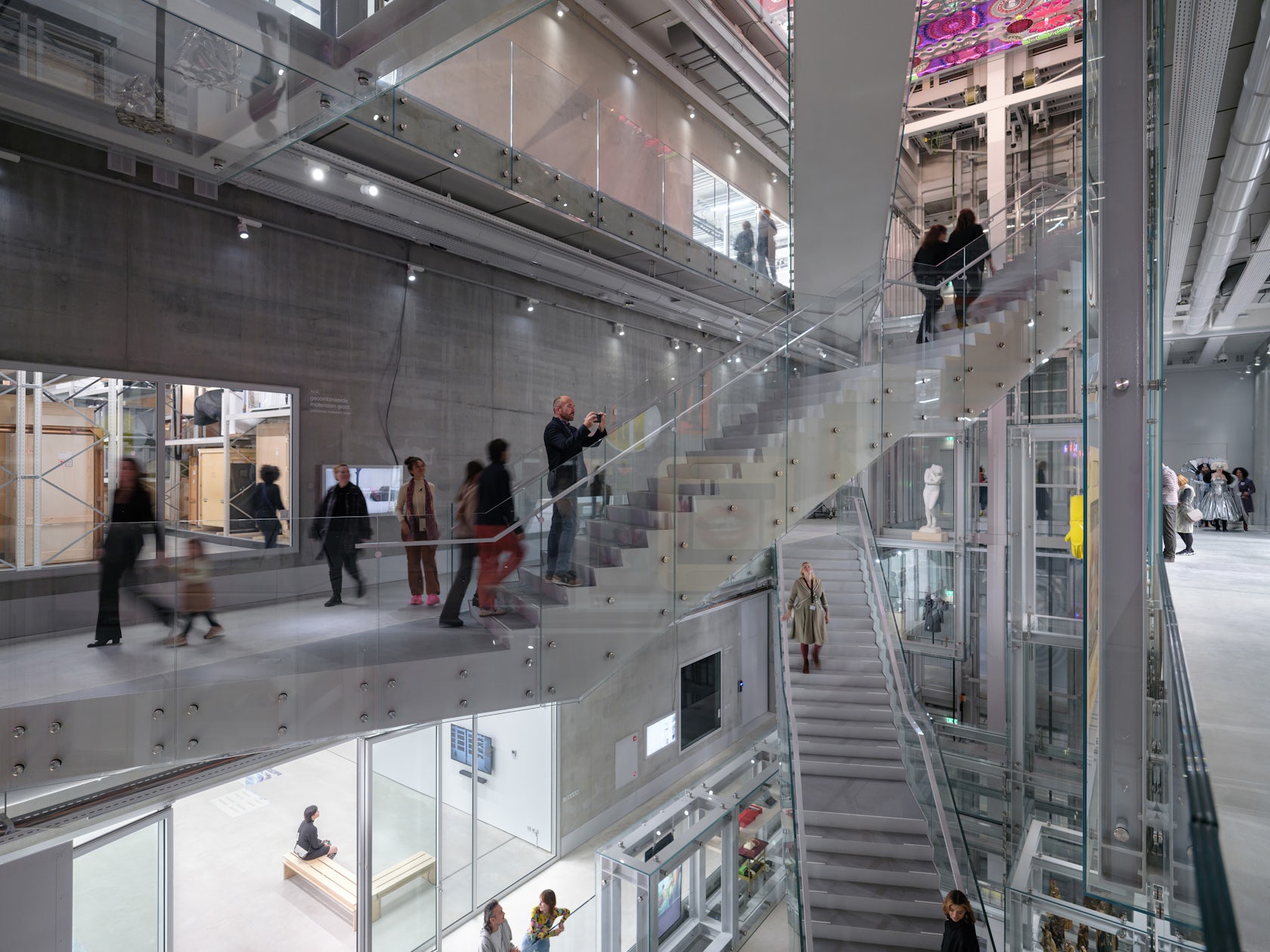
© MVRDV
Each storage space is provided with a specific climate that is maintained by a climate control system. There are five different climate zones, suited to works of art produced with different materials: metal, plastic, organic/inorganic, black-and-white and colour photography. This method of storing the art collection calls for specific climatic conditions in which the air is not overly cold, warm, humid or dry.Sustainability is an important feature in the design.

© MVRDV
The building includes many features to reduce the use of energy and water during its operation. A combination of geothermal heat exchange, solar panels, LED lighting, and high-performance insulation makes the building energy neutral with regards to building-related energy consumption. Rainwater will be stored in the basement and used for irrigation and toilet facilities, reducing the building’s water consumption.
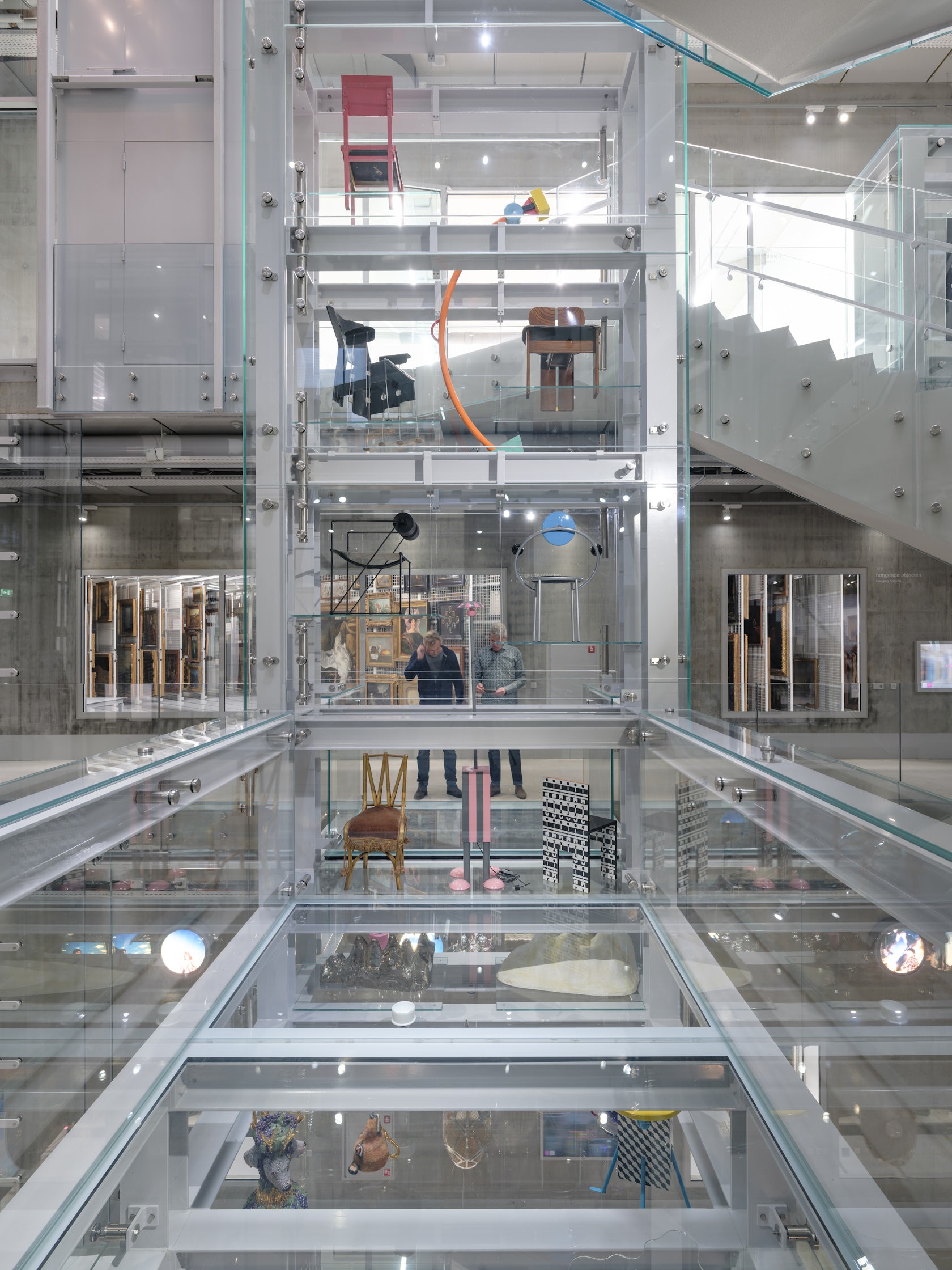
© MVRDV
This water storage, combined with the green roofs, makes water run-off minimal, with any remaining run-off directed into the pond of Het Nieuw Instituut, which is converted into a water basin for the surroundings. In this way, the Depot can be disconnected from the sewage system for rainwater..
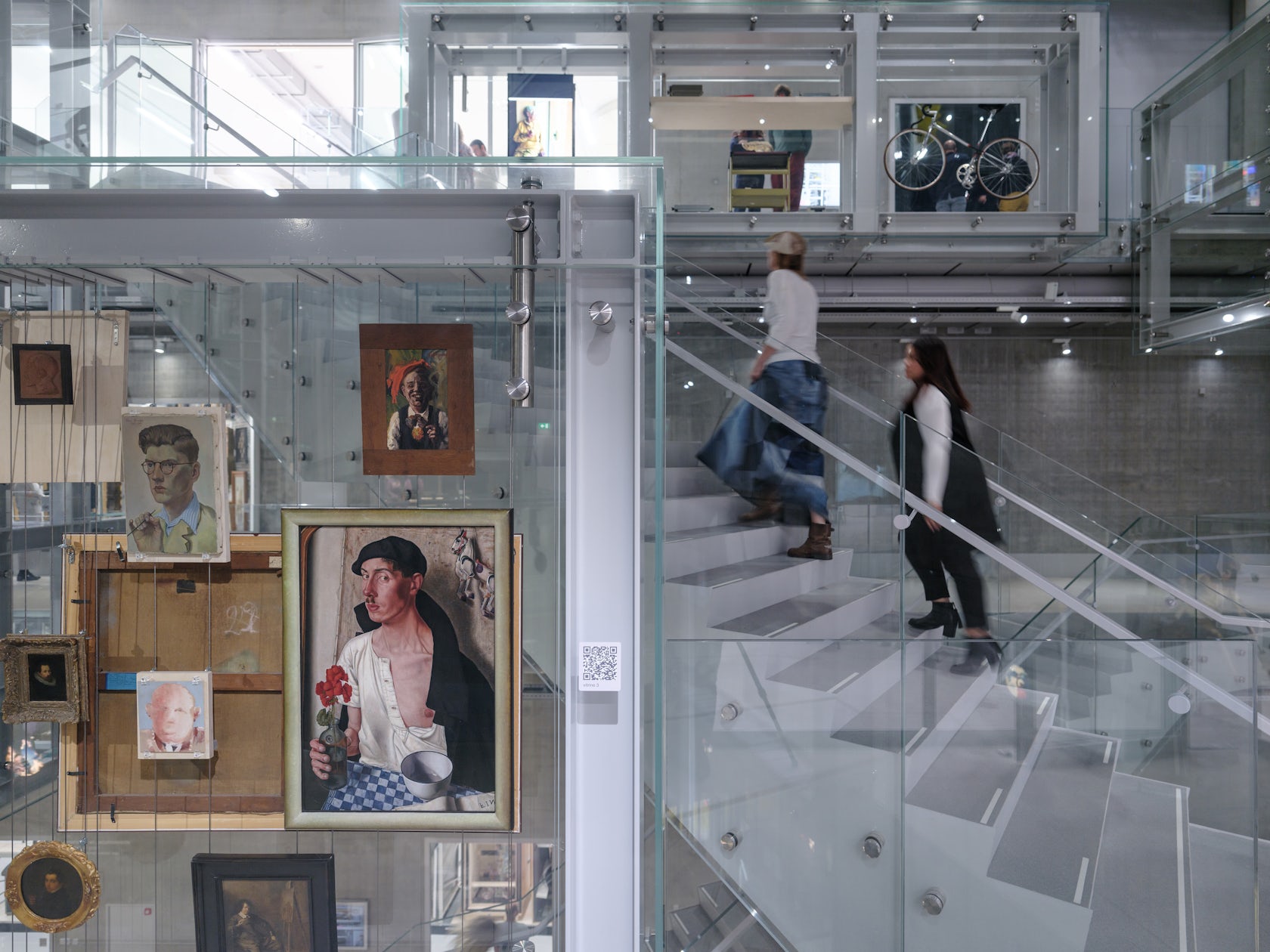
© MVRDV


